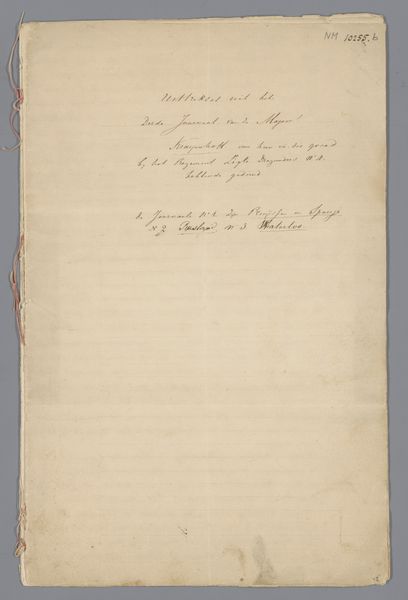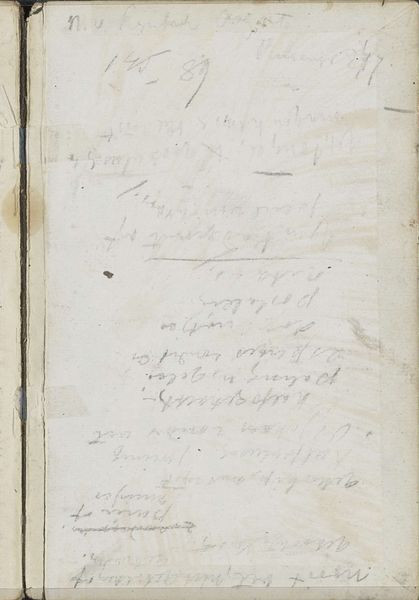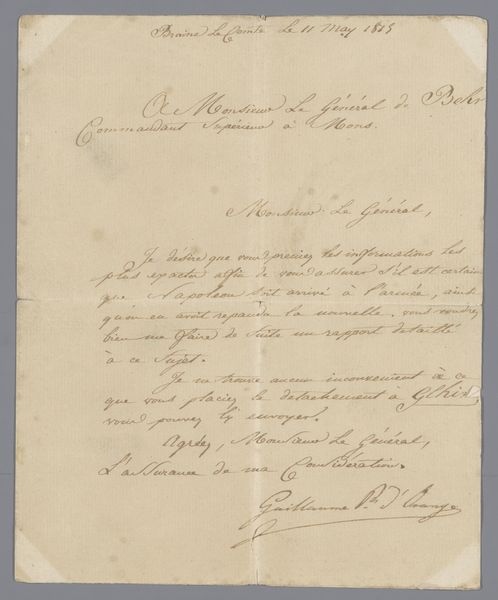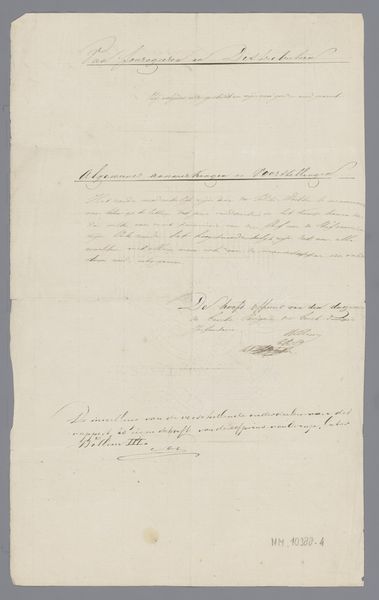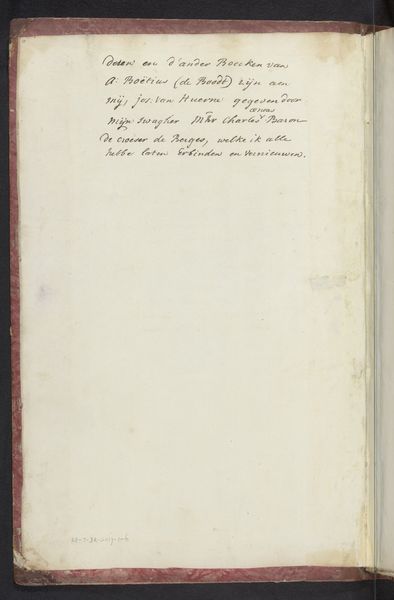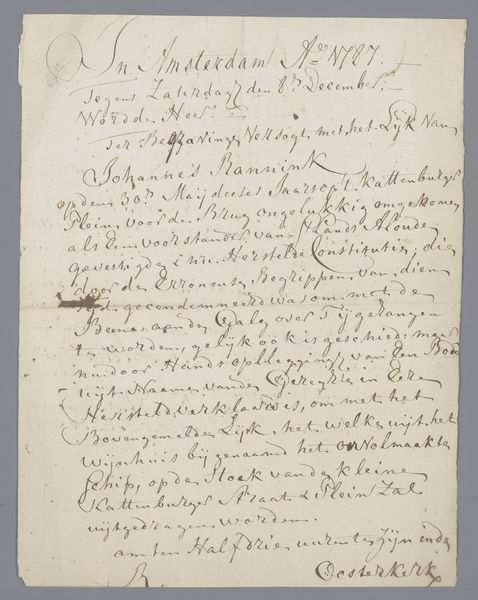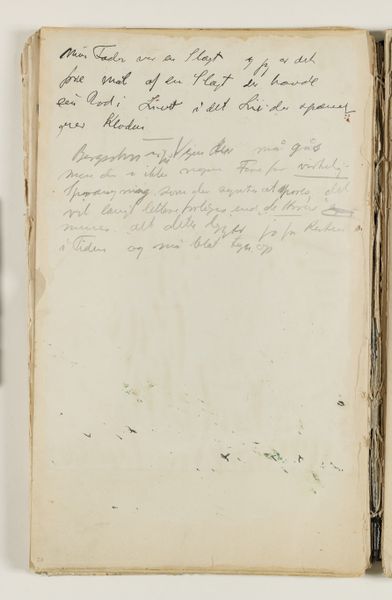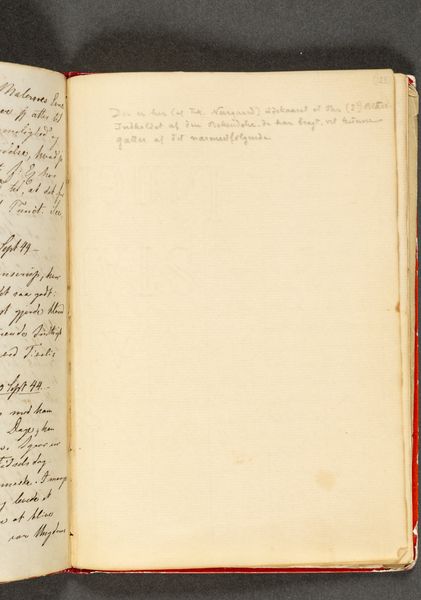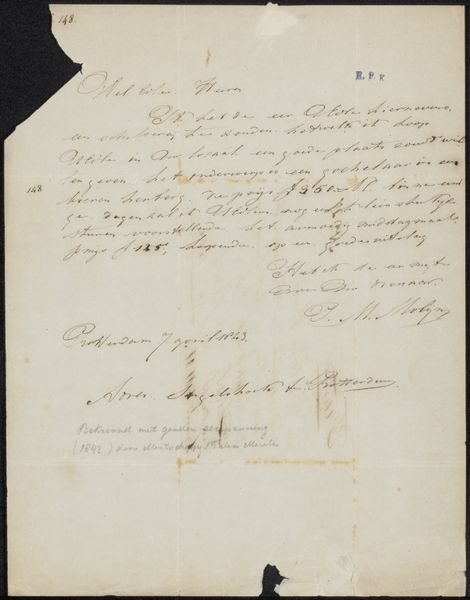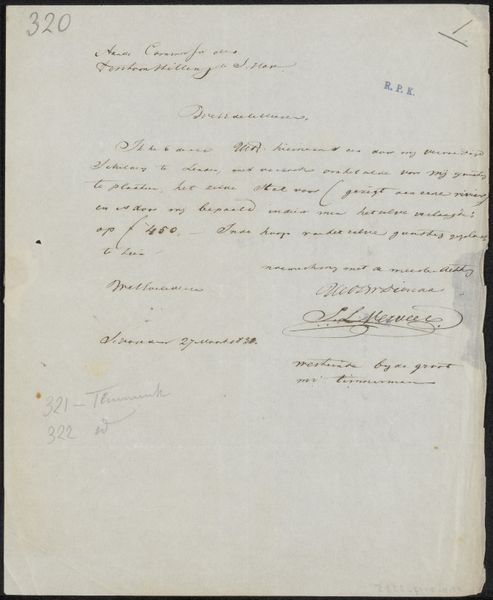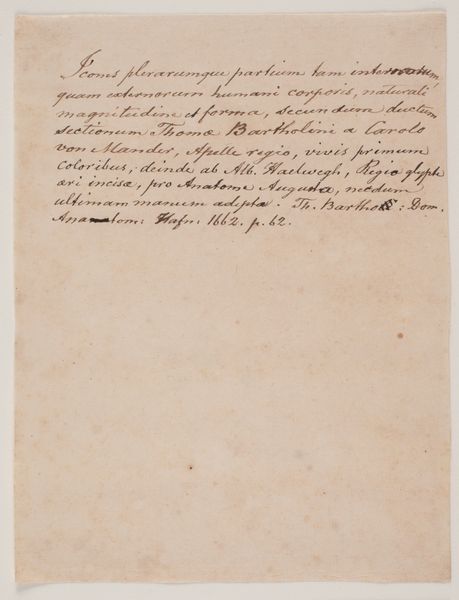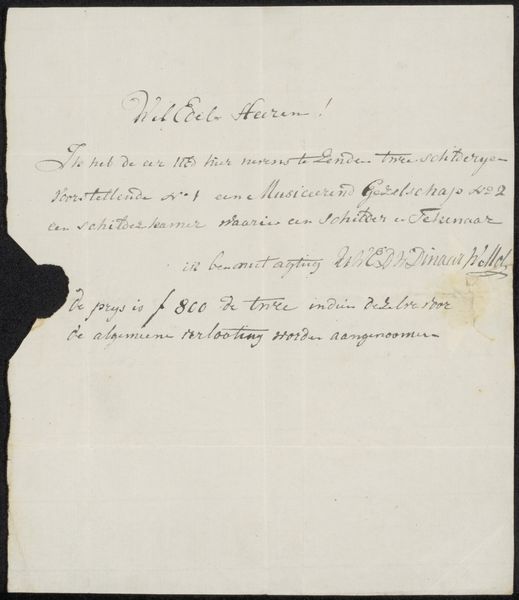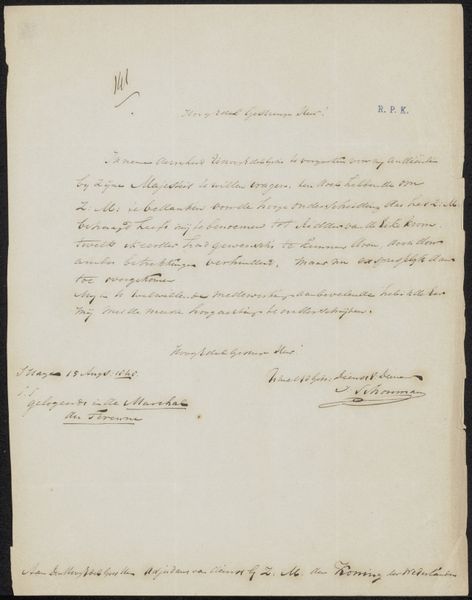
drawing, coloured-pencil, paper, pencil
#
portrait
#
drawing
#
coloured-pencil
#
paper
#
coloured pencil
#
romanticism
#
pencil
#
watercolor
Dimensions: 161 mm (height) x 103 mm (width) x 11 mm (depth) (monteringsmaal)
Editor: We're looking at Johan Thomas Lundbye’s "Blank Side" from 1845-1846. It’s a drawing made with pencil and colored pencil on paper, currently held at the SMK in Copenhagen. At first glance, it feels like looking at a historical document, or perhaps a personal journal filled with barely legible scribbles. How do you interpret this work within the context of 19th-century art practices? Curator: What I find fascinating here is the relationship between private and public. While the Romantic era celebrated individual expression, an artist's notebooks like these offer us something rawer, a peek behind the curtain of polished masterpieces meant for public display. This page, ostensibly 'blank', is teeming with ghostly writing. Don't you find the almost palimpsestic nature intriguing? Editor: Yes! It’s like archaeology of the artist’s thought process. Almost like witnessing an intimate act that was not necessarily intended for the public sphere. Why preserve such seemingly mundane documents in museums? Curator: Exactly! The institutional preservation of items like this raises a compelling question. Is it the content or the fact it was a creation from an established figure that gives it value? Was Lundbye actively composing for posterity, or did subsequent generations ascribe artistic merit to private reflections? Editor: So the act of collecting and exhibiting can transform something originally intended for private use into a public artwork, giving it new cultural significance? Curator: Precisely. This is an intriguing example of how socio-political forces—the museum as an institution—shape not only the reception of art, but our very understanding of what constitutes art in the first place. What did Lundbye perceive, record, remember in locations named like 'Orange' or 'Nimes?' The visible names imply travel through Europe, but what about his impressions makes it relevant enough to save to this day? Editor: I never considered the power dynamic involved in deciding what's worthy of display. I came into this thinking of Lundbye and left thinking about institutions. Curator: And perhaps, questioning if it’s blank at all. The power of the erased is immense, and this serves to underline that point.
Comments
No comments
Be the first to comment and join the conversation on the ultimate creative platform.
